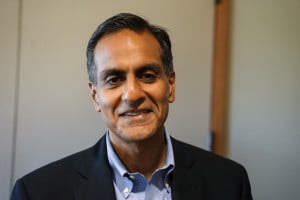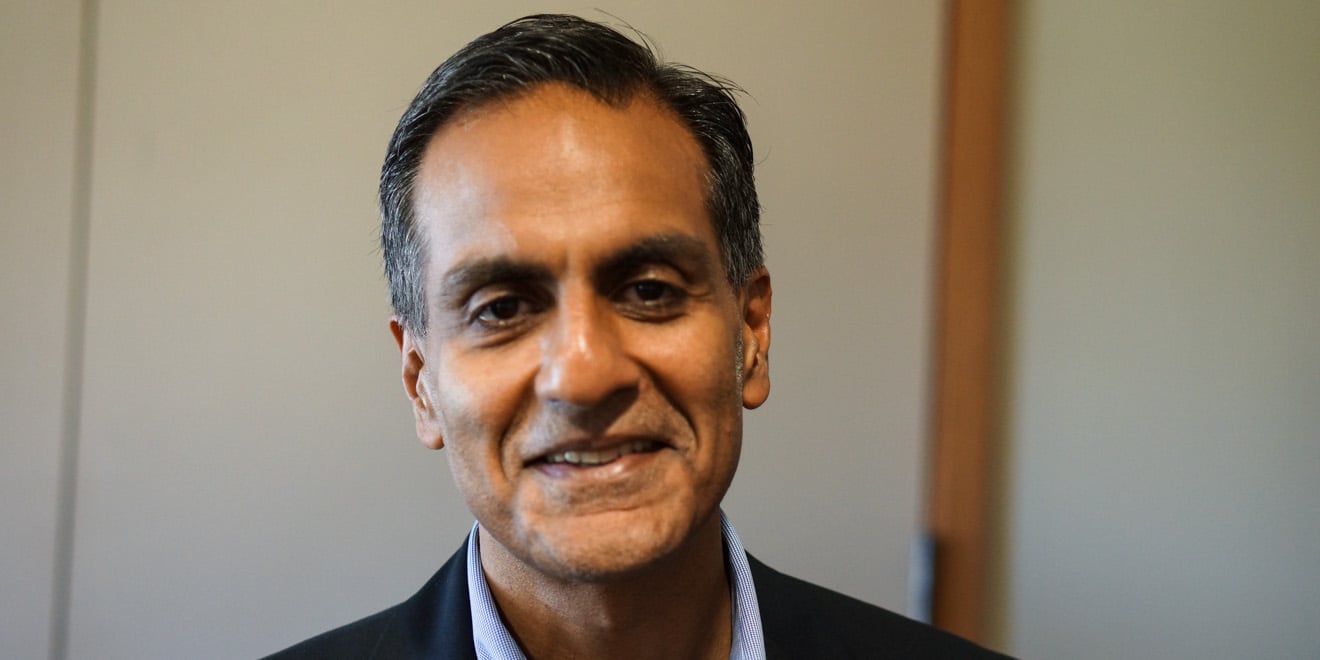
Richard Verma, the 25th U.S. Ambassador to India, visited Stanford’s campus on Friday and spoke about the deepening strategic, political and economic relationship between the United States and India. He also spoke about increased Indo-U.S. bilateral trade, as well as collaboration on climate, health, space, defense and education — which has come as a result of recent meetings between President Barack Obama and Prime Minister Modi – as well as the creation of several working groups.
The Stanford Daily sat down with Verma to talk about his career and current affairs in India.
The Stanford Daily (TSD): What are your personal goals for your term as Ambassador?
Richard Verma (RV): First, I want to make sure that we follow through on all the commitments that the President and Prime Minister made — not only in January’s summit, but in last September’s summit. We have really extensive work plans in 80 different areas, 30 different working groups — so making sure we make progress on those. Secondly, I’d like to deepen and expand our cooperation in the strategic and defense area, in the clean energy and climate area, in the economic area — start working towards that goal of $500 billion of two-way trade, do more in health and education, in science and space. There’s a lot we can do to really try and take the relationship to the next level — which is the path we are on.
TSD: What has made this increase in cooperation between India and the U.S. possible?
RV: We both have these commitments to education and science and learning, and entrepreneurship, and that’s what brings us together, and we compliment each other in so many ways. We just have so much in common. We’re natural business partners, we’re natural security partners, and our people are finding connections by interacting with one another — whether it’s through culture, or film, or art, or science, education — in all these areas.
TSD: What led you to come give this presentation at Stanford today?
RV: Kathy [Stephens] and Mike [McFaul] were the principal drivers of this, and when I knew I was coming out here – Northern California – because the Indian Prime Minister was coming out, then we managed to work out coming over and talking about India, which is a topic that I think a lot of people are interested in these days.
TSD: What advice do you have for students who are interested in careers in foreign policy?
RV: First, I would say, if you have a study abroad opportunity, even if it’s for a summer, try to take advantage of it. If you have travel opportunities, off the beaten path a little bit — to parts of Asia, or Africa, or Latin America — take advantage of it. I think the foreign service is a great track but one thing I think people should do to give themselves additional opportunities is to look for other work opportunities, or study opportunities, or education opportunities that would give them a chance to be overseas. I would say explore the whole gamut of things that are available to you.
TSD: What spurred your interest and your career in foreign service?
RV: I’ve always been interested in international affairs. I started my career in the military, so I’ve been in the national security and international affairs cone for about 25 years; even in private law practice, I was in the international side of things. This intersection between public policy and international security and international affairs is what’s driven my interest. It’s probably something to do with the fact that my family immigrated from India in the 60s, so that creates a kind of international nexus right there in my family as well.
TSD: What will it take for India to gain a permanent seat on the U.N. Security Council?
RV: It’s a very difficult process. What we’ve committed to is supporting India’s seat on a reformed U.N. Security Council. The pace of reform at the U.N. sometimes is very difficult, and it’s a consensus-driven body as well; and of course, not everyone agrees with our formulation. All I can say is that we’re committed to it; we’re going to work on a process with our Indian colleagues, and other advocates for India’s reform seat, and see where the process takes it. It’s never going to move as fast as we would all like it to move, but we’re going to push as hard as we can.
TSD: What kind of actions can we expect from India in this upcoming session of the U.N. General Assembly?
RV: India’s been a real leader on peacekeeping over decades, and so I’m sure that will be a big focus for them. They are committed as well to the development goals. I think the Prime Minister and external affairs minister will aim to ensure that India continues to play a leadership role – whether it’s on climate, or development, or on peacekeeping, but I’m sure there is a range of other areas that we’ll have to wait and see what they come to the table with.
TSD: Do you think these countries would benefit from more educational exchange?
RV: One hundred percent. We do have about 5,000 American students that come to India each year, but I think Americans would benefit and I think Indians would benefit by having more Americans come to India. If we could do more faculty exchanges, if we could do more higher education collaboration, if we could bring, not only higher ed, but vocational training and community college programs to India as well. I think our education partnership is good, but we’ve just begun to scratch the surface on what it can be.
TSD: What do you think about Stanford student-led initiatives to help government bodies in India, like the CS 90SI class which is helping to build a government tracker for political accountability in Delhi among other things?
RV: One of the signs of our government-to-government success will be when we can actually step back and let all of these things and programs and people flourish, without the governments having to jumpstart a lot of these things. So I’m really encouraged when I hear things like that.
This interview has been condensed and edited.
Contact Erica Evans at elevans ‘at’ stanford.edu.
